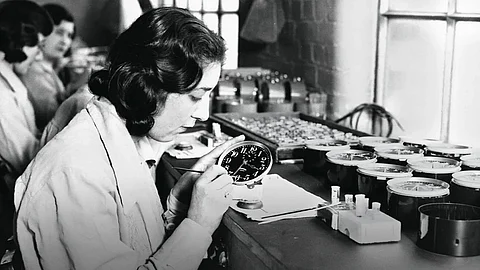With every use of the “lip-pointing” technique, the women unknowingly swallowed tiny amounts of radium paint. Employers assured them it was perfectly safe—some even claimed it was good for their health and skin. In reality, the element they were ingesting was slowly poisoning their bodies.
Once ingested, radium is biochemically mistaken for calcium by the body due to their similar chemical properties, particularly their shared divalent cationic nature (both possessing two valence electrons). As a result, radium is incorporated into bone tissue, leading to internal radiation exposure and cumulative cellular damage. Once embedded, the radium releases alpha radiation, damaging nearby cells and altering DNA.
Over time, factory workers began complaining of jaw pain and discomfort in their mouths, which left doctors puzzled. It didn’t stop there—teeth began loosening and falling out, leaving behind pieces of bone that looked as if they’d been eaten by moths. The condition became so common among the dial painters that it was later known as “radium jaw.”
The situation grew worse when jaws started breaking away even without surgical tools. Their bones became so fragile that even standing became difficult; in some cases, their own body weight caused fractures. Some accounts even suggest their bodies faintly glowed in the dark because of the radium embedded in their bones.
Health problems didn’t end with the bones. Many women were pregnant during their time at the factories, and radium easily crossed the placental barrier. This led to a heartbreaking increase in miscarriages, stillbirths, and in some cases, babies born with severe deformities. Out of the nearly 4,000 women employed across all the radium dial factories, many suffered life‑long health complications—even if symptoms took years to appear.
Amelia Maggia was the first woman to show these symptoms. She worked for the Radium Luminous Materials Corporation (later renamed United States Radium Corporation) in Orange, New Jersey. What began as a simple toothache soon progressed into painful ulcers, bleeding, and pus. The infection spread to other parts of her body, ultimately leading to her death on September 12, 1922, from a massive hemorrhage.


